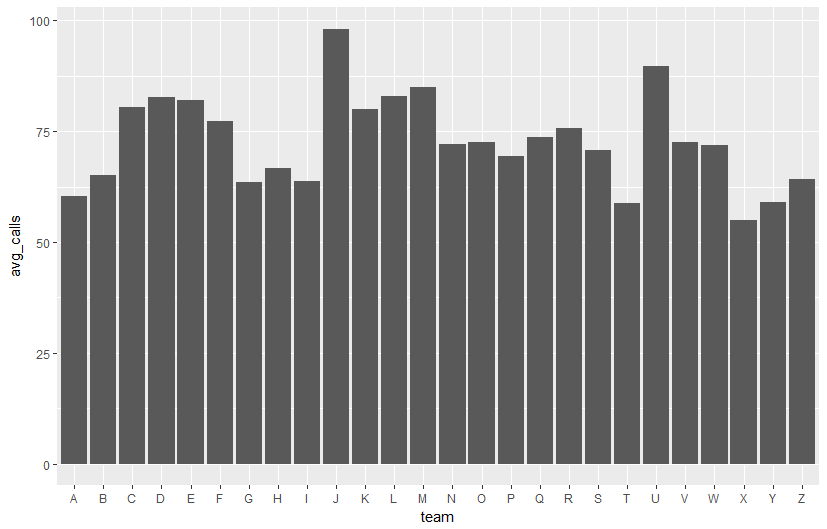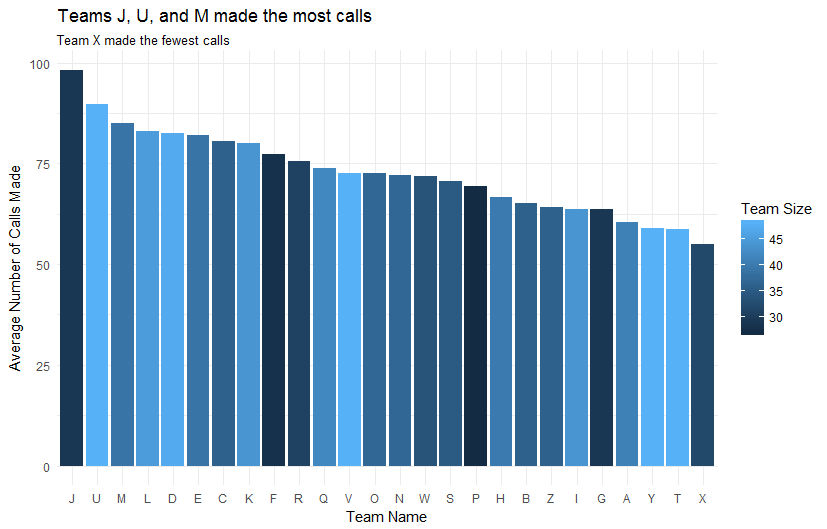Visualizing recruiting data
HR Analytics: Exploring Employee Data in R

Ben Teusch
HR Analytics Consultant
Small number of groups
call_center_a %>%
group_by(team) %>%
summarize(avg_calls = mean(calls_made)) %>%
arrange(desc(avg_calls))
team avg_calls
<chr> <dbl>
1 D 84.21283
2 B 79.65947
3 A 73.80612
4 C 61.73712
Large number of groups
call_center_b %>%
group_by(team) %>%
summarize(avg_calls = mean(calls_made)) %>%
arrange(desc(avg_calls))
team avg_calls
<fctr> <dbl>
1 J 98.16318
2 U 89.64824
3 M 84.90123
4 L 82.90802
5 D 82.62958
6 E 82.08344
7 C 80.46505
8 K 79.91899
# ... with 18 more rows
A simple bar chart
call_center_b_summary
team avg_calls
<fctr> <dbl>
1 J 98.16318
2 U 89.64824
3 M 84.90123
4 L 82.90802
5 D 82.62958
6 E 82.08344
7 C 80.46505
8 K 79.91899
# ... with 18 more rows
ggplot(call_center_b_summary, aes(x = team, y = avg_calls)) +
geom_col()
A simple bar chart

A polished bar chart

Let's practice!
HR Analytics: Exploring Employee Data in R

